Most kids believed in Santa Claus at one time or another, but most adults don’t. That’s one myth down, but how many others do people believe in? Is it true that swallowing gum can cause some seriously slow digestion or that you can easily slip on banana peels? Sometimes it’s just not possible to research everything you hear or test it out through experiments. So how can we know if these myths are true or not?
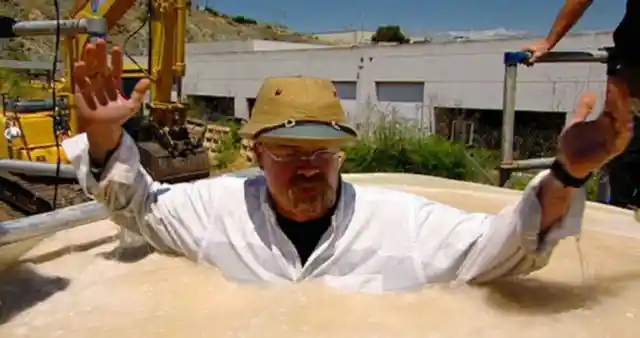

Luckily for us, the popular TV show MythBusters with hosts Adam Savage and Jaime Hyneman took the time (and cost) to set up experiments and test some of these myths. Many others were busted by a bit of research, even if they didn’t make it onto television. In the end, it looks like a lot of popular myths end up being wrong. Here are 36 common myths that got dispelled by the MythBusters crew and others. See how many you recognize:
The pirate elevator
If you are a fan of pirate movies from Treasure Island to Pirates of the Caribbean, then you’re probably familiar with the famous “pirate fall”. It’s when a pirate is atop the mast but needs to get down to the deck fast.
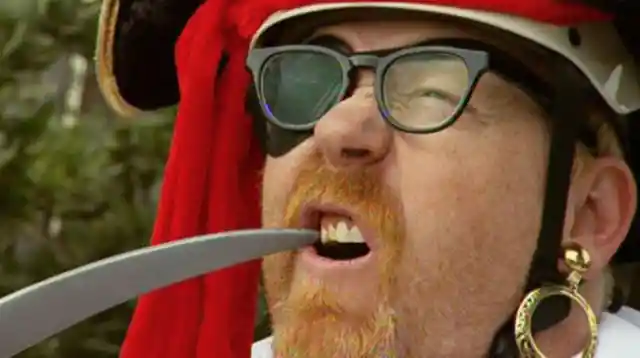
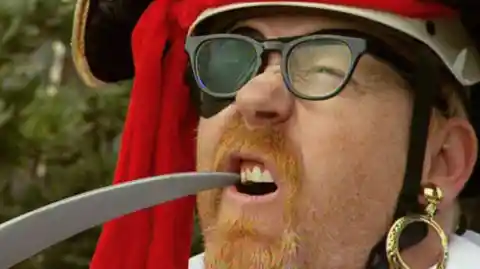
Lowering yourself slowly is not an option. So what is a pirate to do? The “pirate fall”, of course – thrust your sword into the sail and glide down fast and safe! In real life though, the sail would rip and the pirate would break a leg if not more.
A cowboy warning shot
What do you do if you want to give a warning to an enemy in the Old Wild West? If you’re a fan of old cowboy movies, most likely you’d pull out a revolver and carefully shoot off your enemy’s hat.


But how realistic is this? Assuming your shooting accuracy is fantastic, would it be possible to get just the hat to fall off? Most likely not – especially not with a revolver. To pull off that trick, you’d need a shotgun at least.
The underwater boat
This myth is also seen in a lot of popular pirate movies. It goes like this: what do you do if you need to be underwater for a long time but don’t have a scuba diving suit? The answer? Flip a boat upside down.


Supposedly, flipping it upside down will create an air pocket that will allow people to walk along the ocean floor while still breathing. Unfortunately, it’s not going to work. It’s better to take a really deep breath or put on scuba gear before attempting something like this.
The death ray myth
Special effects experts Jaime Hyneman and Adam Savage, the hosts of Mythbusters, were pumped to test out the “death ray” myth. They built a huge wall full of mirrors (over 300 of them!) to try and collect all the sun’s rays and focus them into a point. Did it work?


Unfortunately not. The only thing killed was the myth of the death ray. Despite their expertise and impressive setup, the mirrors created less power than needed to light some wood on fire – never mind making a death ray!
Slipping on a banana
If you’ve ever watched cartoons on Saturday morning, you’re probably familiar with slipping on a banana peel. It’s a classic of physical comedy. Some character, often in a hurry or running after someone, accidentally steps on a banana peel and – whoosh! They fall down.
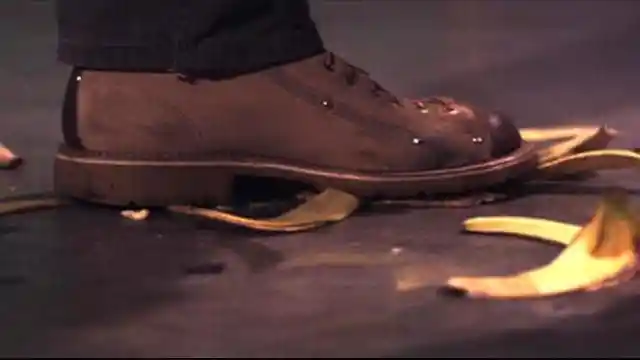
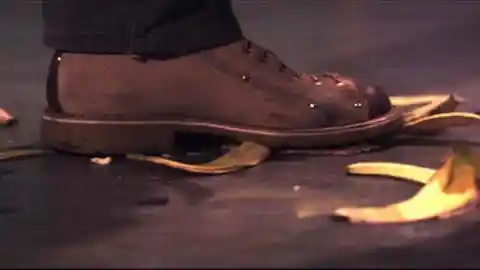
But can you actually slip on a banana peel? How accurate is this cartoon classic? Unfortunately, it seems that it isn’t very accurate. Although banana peels can be a bit slippery, it’s not nearly as much as the cartoons lead you to believe.
Letting the air out of the Jaws myth
In the classic film Jaws, the massive Great White shark was destroyed by an explosion. The character Brody managed to shove a scuba tank into the shark’s mouth and then shoot the tank from afar. Kabooooom! It exploded… and so did the shark.


Seems realistic, right? But can a scuba tank really cause such a massive explosion or is this just another Hollywood myth? It seems to be the second option. A bullet would only cause the tank’s oxygen to release, not the entire tank to explode.
Disappearing bullets: the perfect crime
At first, it sounds like a perfect crime. Rather than use a bullet made from copper, lead, or rubber, why not use one made from ice? After the bullet left the chamber, it would melt away without a trace. Right?
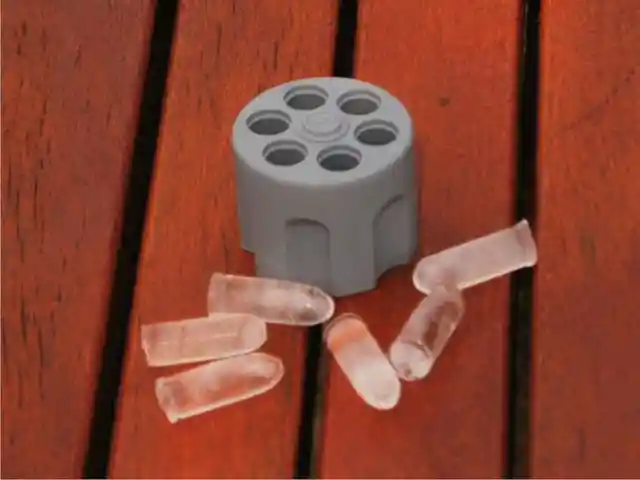
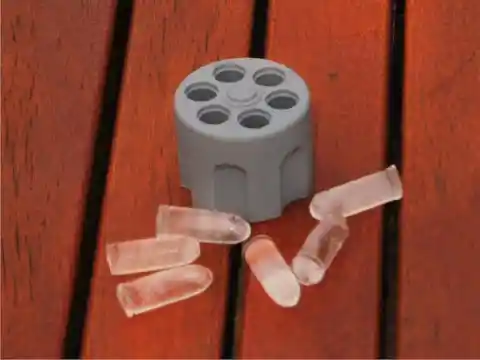
Wrong. The idea that the bullet would melt after leaving the chamber and thus leave no evidence is a myth. Much more likely is that the bullet would melt before leaving the chamber. All that would come out is a bit of water.
The falling penny and the passerby
This is a popular old myth that you might remember from childhood. The myth is this: if you drop a penny off the Empire State Building, it will gain so much speed that it can kill a person walking by on the street.


Sounds plausible, but how true is it? Fortunately for passersby, it’s not true. Although it wouldn’t be comfortable getting struck by a falling penny, it also wouldn’t go so fast as to kill you – but you’d probably walk away with some bruises!
Pick it up quick
Are you familiar with the “five-second rule”? Drop a bit of food on the ground and if you pick it within five seconds, then it’s germ-free and safe to eat. Although many of us believe this, how accurate is it?


Looks like it’s not that accurate. Although some food can still be safe to eat after only a few seconds on the floor (depending on the floor, of course), the food won’t be germ-free. The moment food touches the ground, it will begin collecting germs. Proceed with caution!
Bowel sounds
This one isn’t as popular as other myths, but you might be familiar with it. The myth is this: if you listen to certain very low sounds, it might cause you to be unable to control your bowels! Yuck. That doesn’t sound fun.


Although not fun, is it true? Luckily, Adam Savage of the MythBusters team tested it out so you don’t have to (thanks, Adam!) What did he find? Fortunately, his bowels stayed under control – no problems there!
Drowning in quicksand
Drowning in quicksand is an infamous cartoon and movie trope (especially movies from the 1960s), but how accurate is it? Can people really sink so much when they encounter quicksand that they end up completely covered by it?


According to the MythBusters team, no. It turns out that the sand in quicksand is usually only a few feet deep. Also, humans are much less dense than quicksand itself, so wouldn’t sink all the way to the bottom. That being said, it can be mighty difficult to crawl out of!
The yodel-induced avalanche
Are you familiar with yodeling? This style of singing was very popular in early movies. Often, these movies had scenes where someone yodeled on a mountaintop and it caused an avalanche!


Although it might make for a great scene in a film, it would be hard to see in real life. The MythBusters team tested it out and found it was false. The human voice is certainly powerful, but not powerful enough to cause a mountain to drop all that snow!
Hats off to you, Oddjob
If you’re a James Bond fan, you probably remember Oddjob, the infamous villain with the bowler hat. He used this metal-lined hat as a weapon and could throw it so fast that it could knock the head off a statue!


Could that happen in real life or is it just a myth? Turns out it’s a myth. It would be very difficult to throw a hat so quickly that it would knock a head off the statue. Most likely, it would just fall next to it!
Bullet through a sniper’s scope
You’ve probably seen movies where a sharpshooter picks off a sniper by shooting a bullet that goes perfectly through the scope. After traveling through the layers of glass, it spells the end of the sniper. But how accurate is this in real life?


The MythBusters duo tested it out with a variety of bullet types. They found that, for most, it’s highly unlikely. Assuming a bullet goes perfectly through the scope (which is difficult in itself), the glass layers inside the scope would stop the bullet before reaching the sniper’s eye and doing damage.
The skydiver and the seesaw
Many kids like to play on seesaws. The bigger the weight on one side, the higher the other side goes. What if the weight came from a skydiver falling from the sky? What would happen then? (Obviously, don’t try this at home.)


Luckily, the team at MythBusters used a dummy doll to test it out. Unlike in cartoons and slapstick comedy, in real life, this would have terrible consequences – most likely, the unfortunate death of both. Don’t try at home.
A finger in the gun’s barrel
If you’re a fan of cartoons, you might have seen this common trope in Bugs Bunny or elsewhere. One character gets a gun pointed at him and to stop the bullet, the character plugs the barrel with a finger. The gun backfires and explodes!


Instead of the bullet going out the front of the barrel, it goes out the back and causes an explosion in the face of the person holding the gun. In real life, this would cause the person with their finger in the barrel to have it blown off.
The Bamboo Weapon
For those who aren’t familiar with Star Trek, a little background might be useful. In the late 1960s when the first Star Trek series came out, there was an episode where Captain Kirk (played by William Shatner) was to fight an alien (called a Gorn) to the death.


Although the alien was bigger, Kirk was smarter. He made an explosive mixture, crammed it into a bamboo tube, and used diamonds as bullets. Kirk won the day, but in real life, nothing would have shot out or he would have blown himself up.
Candy is easy to steal from a baby
You might be familiar with the phrase “as easy as stealing candy from a baby.” This popular phrase is used to describe activities that are easy to do. But how easy is it to steal candy from a baby?


Turns out it’s not too easy. Many kids have a sweet tooth and love their candy. They’re not ready to give it away so easily. Instead, they will cling onto it, gripping it tight so they can eat it later. Kids can be very stubborn – they know what they like!
Catching a bullet with your teeth
A lot of magic shows revolve around dangerous scenes that wow the audiences. Sometimes this involves the infamous (and dangerous) trick of having someone catch a bullet with their teeth. Not to be tried at home!
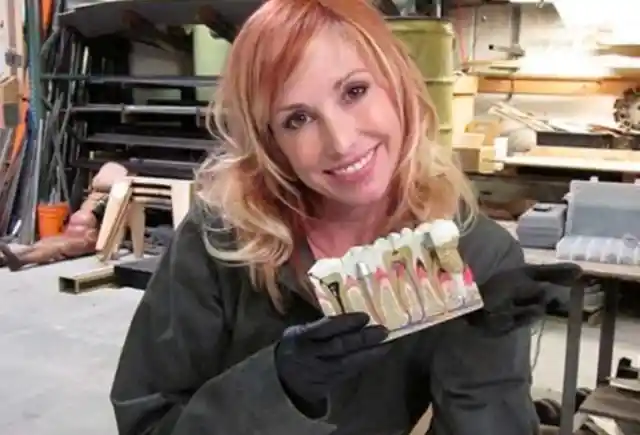

Besides being highly dangerous, is it even possible to do? When the MythBusters crew took to testing it out, they used prosthetic teeth instead of actual teeth. What they found was that the teeth shattered every time. Teeth are strong enough to break down food, but not strong enough to catch a bullet!
Ice cream and soft serve are the same
Of course, Dairy Queen sells ice cream. Right? That’s what many customers of Dairy Queen have thought over the years, but according to the Food and Drug Administration (FDA), Dairy Queen does not sell ice cream.


The FDA has strict guidelines on what they count as ice cream. For a dessert to be considered ice cream, it has to have a butterfat content of at least 10 percent. Dairy Queen only has 5 percent. That’s why they advertise their soft serve, not their ice cream!
Cage-free eggs are completely humane
The labels we see on supermarket food can tell us where the food is from and how it was made. Many shoppers want to make sure their food was made humanely, so they purchase things like cage-free eggs. But how humane are these?


Although “cage-free” sounds much better than birds who are cage-bound, the term can be a bit misleading. Laws change from country to country, but oftentimes, the birds still spend a lot of their time in overcrowded living quarters where it’s hard to move.
You can’t eat food after the “use by” date
Anyone who has ever been to a grocery store is probably familiar with the “use by” date. Many people think that it means you have to eat whatever food you have before that date or else it will go bad. But is that really the meaning?


The “use by” date doesn’t mean the food will immediately go bad on that day. It’s more about maximum freshness. The food will be at its best quality before that date, but if you consume it after it’s still edible – just not as delicious!
Coffee will make you shorter
Some people grow up to be as tall as NBA players and others don’t. What’s the deal with that? A lot of it has to do with inheriting the right genes, but good nutrition is also an important factor. Have you heard that coffee can make you shorter?


Although not as popular as other myths on this list, this idea has been thrown around a few times. Is it true? Most certainly not. Coffee might affect kids in other ways (especially if it’s filled with sugar), but stunting their growth isn’t one.
Honey can expire
Are you a fan of honey? If so, you might have noticed that some people think honey has an expiration date – which makes sense. Honey is a food and most foods expire. Why would honey be exempt from that?
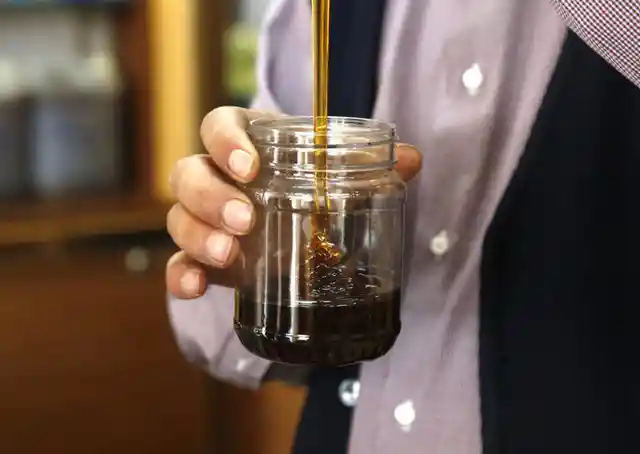
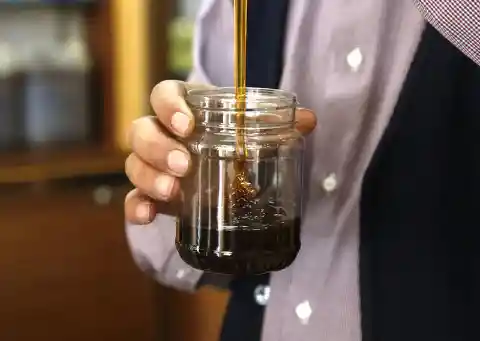
Turns out it is. Remarkably enough, if you properly seal a jar of honey and keep it in the right conditions, it can maintain its sweet flavor for centuries! So if you want to give a sweet gift to your great-great-grandchildren, stow away some honey for them!
The sidewalk omelet
This is a longstanding myth that gets passed around a lot. On some days, the temperature is so hot that you can bring a carton of eggs to the sidewalk, crack them open, and make an omelet. Is that right?


Although sidewalks can get pretty hot in the summer, most don’t get hot enough to properly make an egg. Sometimes they can reach up to 145 ℉, but for a delicious omelet without a funny tasting yolk, you’d need at least 160 ℉!
GMOs are bad for you
How we grow what we choose to eat has been a big debate for modern folks. Some people are comfortable eating whatever is in front of them, others have preferences for only organic foods and raise concerns over Genetically Modified Organisms or GMOs.
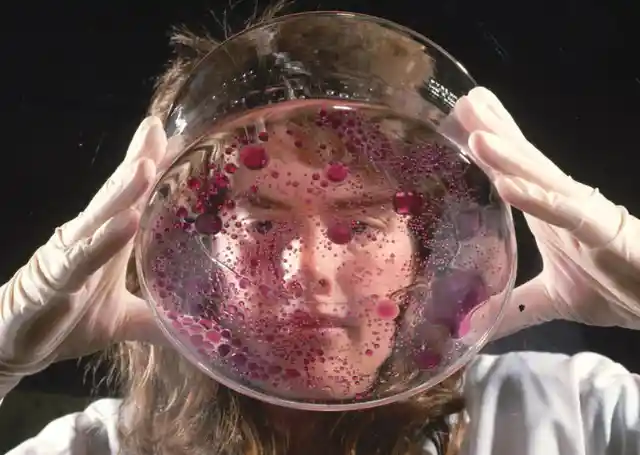

Are GMOs safe to eat or not? That, in a nutshell, is the debate. It turns out that some pretty authoritative sources say yes. For example, the National Academy of Science has told the public that GMOs are safe to eat.
The French created French fries
Many people who eat French fries and ketchup assume the fast-food staple is from France. It’s right there in the name, right – French fries. But names can sometimes be deceiving, so oddly enough, they don’t come from France.


Instead, they come from Belgium! During the winter when local villagers couldn’t fish anyone they decided to try something else to feed themselves during the cold. So they fried up a bunch of potatoes and these became “fries”. But for some reason, in America and Canada, the name “French fries” stuck. Go figure.
White chocolate is a kind of chocolate
As we learned from the two examples above, names can be a bit deceiving. French fries don’t come from France and Dairy Queen only sells soft serve. Now we’ve come to white chocolate. It’s also in the name, is it chocolate?


Sometimes yes, sometimes no. The Food and Drug Administration (FDA) has strict standards for categorizing food. For something to be chocolate, it has to have at least 20 percent of cacao fat in its weight. Some bars of white chocolate have this, but many others don’t.
White potatoes and sweet potatoes are siblings
As we learned from French fries and white chocolate, names aren’t as simple as they seem. Now consider the white potato and the sweet potato. They’re both potatoes and like (potato version) of siblings, right?


Turns out they are related, but not as close. They’re more like distant cousins than close siblings. The white potatoes are more closely related to morning glory plants whereas sweet potatoes are more closely related to tomatoes and eggplants. It makes for an interesting family!
Chewing gum takes seven years to digest
You might remember this one from your childhood. Be careful not to swallow gum or else it’ll stick around for seven years! Yikes! Many people like gum, but not many want to deal with seven years of digestion. Is it true though?


Although it might not be the best thing in the world to swallow gum, it’s not going to stick around for seven years. Stomachs are pretty tough and can break down gum along with all the other food you take in. It might take a little longer, but not seven years longer!
Hawaii invented Spam
Perhaps you are familiar with spam – the famous (and infamous) canned pork. It is believed by many that spam came from Hawaii. Makes sense, considering how popular it is there, but is it true?


Unfortunately not. Spam comes from Austin, Minnesota. During World War II it was served to tons of soldiers in Hawaii because it was so easy to move around. After the war, the spam taste caught on and became an island staple. Although Hawaii might love it, they didn’t invent it.
Figs are part of the fruit family
Are you a fan of figs? Either by themselves, in the famous dessert, or as part of a pudding? If so, you might have thought that this juicy and sweet food belonged to the fruit family. But does it?


Weirdly enough, no. Although they grow on trees and have many other characteristics of fruit, they don’t belong to the fruit family. Instead, they are a special kind of flower that belongs to the mulberry family.
The Germans came up with German chocolate
Do you enjoy eating delicious German chocolate cake with its famous frosting of coconut and pecans? If so, you might have assumed that the name “German chocolate” means that it came from Germany. But as we saw with “French fries”, names can get tricky. So is German chocolate from Germany?


Nope – another case of mistaken identity! The name “German chocolate” isn’t to honor the country of Germany. Rather, it is to honor another person: the American baker Samuel German. It was after him that the chocolate was named.
The lime-flavored Haribo Gold-Bears
If you’re a fan of candy and sweet stuff, you’ve probably come across the famous Haribo Gold-Bears. They come in five flavors: red, orange, colorless, yellow, and green. Now, most green candies have a lime flavor, so the green gummy has to be lime, right?
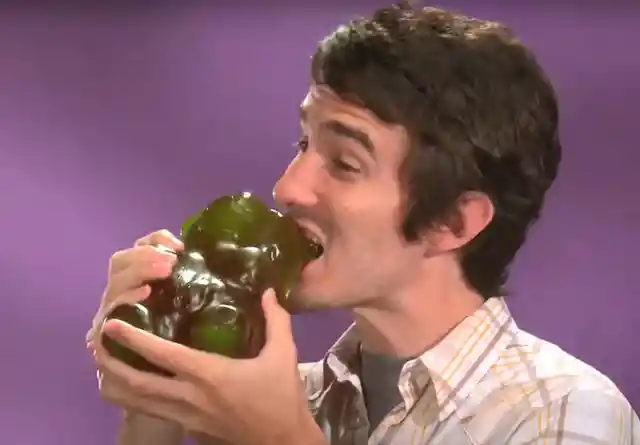
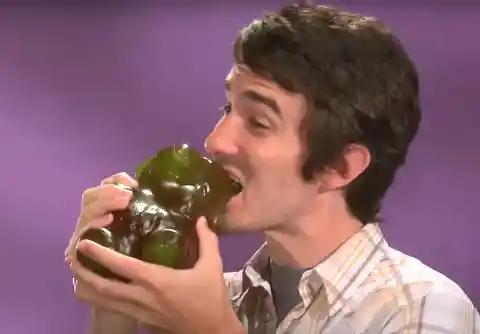
Weirdly enough, it isn’t. These famous green gummy bears are strawberry flavored! It’s something unique in the candy world and something worth savoring next time you give a Haribo Gold-Bear a try.
Halloween’s own creation: candy corn
When most people think about candy for Halloween, one thing comes to mind: candy corn. Those triangular bits of candy are synonymous with trick-or-treating. Most people only see it on Halloween and assume it was made specifically for the holiday – but was it?


Not originally. Candy Corn was originally called Chicken Feed. The people who created it didn’t plan for it to be a once-a-year treat. Instead, they hoped it would be eaten year-round. Unfortunately for them, that hope didn’t pan out because nowadays it’s almost exclusively seen on Halloween.
Be careful not to overcook mushrooms
The beginner cook often needs to pay close attention to not overcook something. A small lapse in attention and – poof! – you end up with something barely edible. This is especially true when cooking mushrooms, right?
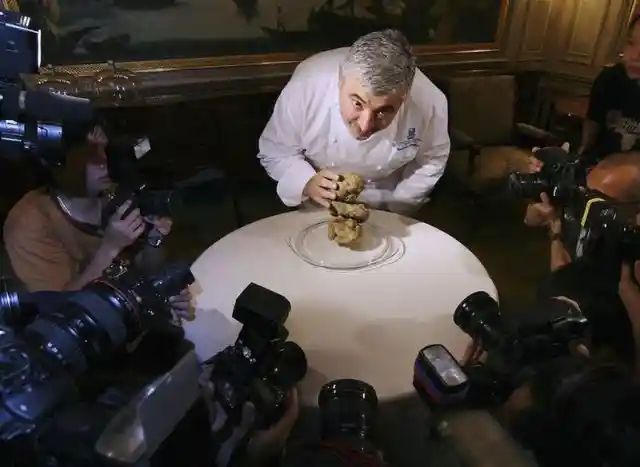
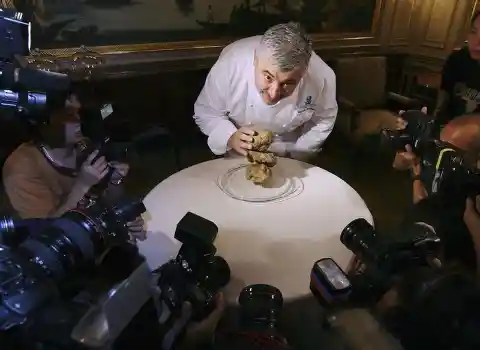
Strangely enough, no. If you are worried about overcooking your mushrooms, rest assured that that is pretty much impossible. Inside the cell walls of a mushroom is a special chemical called chitin that acts to stabilize heat. This makes it able to take excessive heat without drying out too much.
Raw oysters aren’t alive
Are you a fan of raw oysters? This seafood delicacy is loved by some and despised by others. Restaurants that serve raw oysters need to keep them on plenty of ice until a customer is ready to order. Then they are shucked and served. Served dead, right?
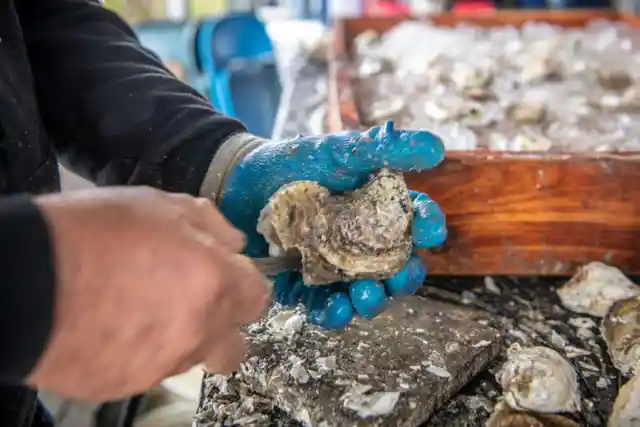

It’s hard to say. Since oysters don’t move around too much (especially when put on ice), it can be difficult for chefs to know which ones are alive or dead. Most are probably dead, but there’s a chance that not all of them are! Eater beware!
Froot Loops taste like the rainbow
Are you a fan of breakfast cereals? If so, you’re probably familiar with Froot Loops and their lovable mascot Toucan Sam. Alongside advertising, Froot Loops are also popular for the many colors in their cereal. Each color has its own flavor … right?
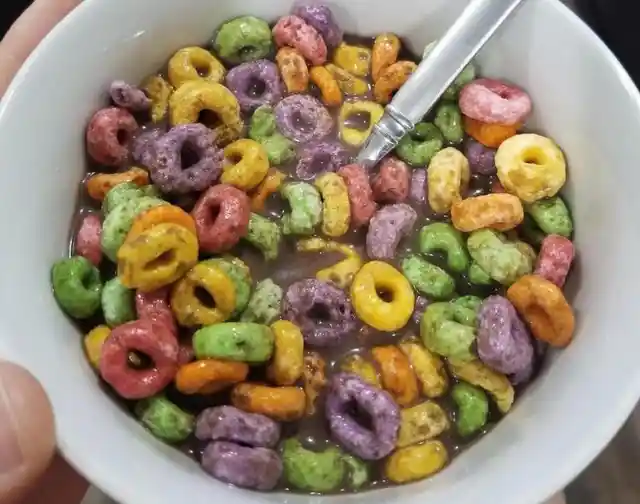
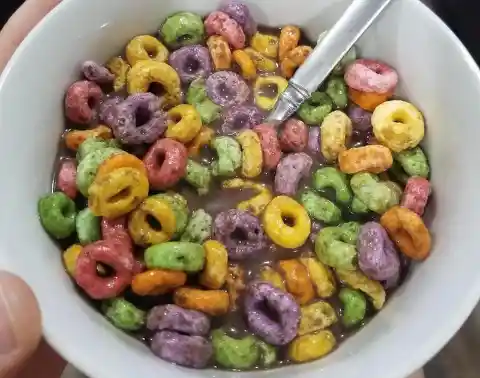
Turns out that’s a myth. Although Froot Loops come in at least six different colors, believe it or not, each one tastes exactly the same! That’s because they’re all made up of the same blend of fruit flavors. Which, to be fair, is pretty delicious!